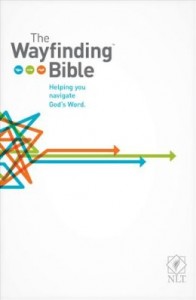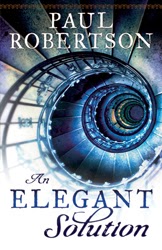In Part 1 I discuss Matitiahu Tsevat’s argument that, in the Book of Job, God and retribution cannot be simultaneous focal points; and in Part 2 that the retribution principle does not always work on our timeline, especially if we hinder God’s purposes. Is Job, then, a book teaching that our experiences are not a consequence of our deeds, or that we cannot expect God to act on our behalf? Absolutely not! It is a book about God’s amazing grace to remain with us amidst our struggles even when we cannot see Him. It is a book reminding us that the retribution principle is in effect–that justice is coming–but that God’s timing is not our timing, and justice belongs to Him alone.
We do not give up the theology of Torah, rather Torah is fulfilled–a new dimension is revealed. Without this bridge between Torah and the New Testament, the end time labor pains do not make sense. We must remember that “The Lord is not slow to fulfill his promise as some count slowness, but is patient toward [us], not wishing that any should perish, but that all should reach repentance” (2 Peter 3:9). We cannot expect immediate results; we have to trust God: “But seek first his kingdom and his righteousness, and all these things will be given to you as well” (Mat 6:33). And we have to recognize that we have only a partial perspective: “For now we see in a mirror dimly, but then face to face; now I know in part, but then I will know fully just as I also have been fully known” (1 Cor 13:12).
When we recognize these things, we can comfort those who mourn, using our love for them to re-open their broken hearts to receive the love and shalom of the Spirit. We can remind them that God is near, and that He is faithful in working everything out for our good.
Job is transformed within his story because God entered his place of suffering. He manifested Himself to Job in a personal way, which broke Job’s mechanical mindset of retribution. He reminded Job of His participation in creation and the earth from the very foundations of time. And He reminded Job that His perspective is so far beyond human comprehension, yet He still chooses to manifest Himself among us. In other words, Job remembers that he has every reason to trust God because of the strong relationship they have had in the past. Job can stop worrying about what will happen next. He no longer has to struggle to survive each day, or to defend himself in the cycle of repetitive introspection and defense. He can rest in God knowing in full confidence that God has this under control–regardless of the outcome or length of the trial.
This realization creates a change in Job, which is reflected in his response: “I know You can do everything; nothing You do can be foiled or frustrated” (Job 42:2 The Voice). He trusts God because he has experienced God personally: “Before I knew only what I had heard of You, but now I have seen You. Therefore I realize the truth” (Job 42:5-6 The Voice).
Job loved God fully when He was a transcendent sovereign God. Now he has encountered God. His theology had been solid, but one dimensional. Now he has experienced God as a personal and living being, and so his theology has likewise matured to a multidimensional understanding. Through Job’s suffering, he was able to meet God in this way, presumably for the first time at this level of intimacy. Perhaps this is why God chose Job: because He wanted to personally interact with Him so thoroughly? This is not to say that suffering is ever God’s purpose, but that in everything we can rejoice in God’s greater purposes, and the hope of that ultimate reconciliation with Him, which results in the restoration of all things. Even in Job we see that the Spirit of God is with him within his suffering (e.g. Job 27:3), and that God is compassionate and anxious for Job’s complete healing.
God is with us too, regardless of what we are going through or why we are going through it. Our job is to focus first on God, and it is in Him that we find peace (not in the reconciliation of our circumstances alone). Remember the formula I suggested in Part 2: Job <—> God —> Retribution? We cannot focus on both God and Retribution simultaneously; but if we truly give our burdens to God, we know that because of His great love for us He will carry out retribution at the first opportune moment. God’s purpose is the restoration and reconciliation of all things–He created the heavens and earth to be good, and wants that goodness restored. We have that to look forward to–both now, and in the coming days.





